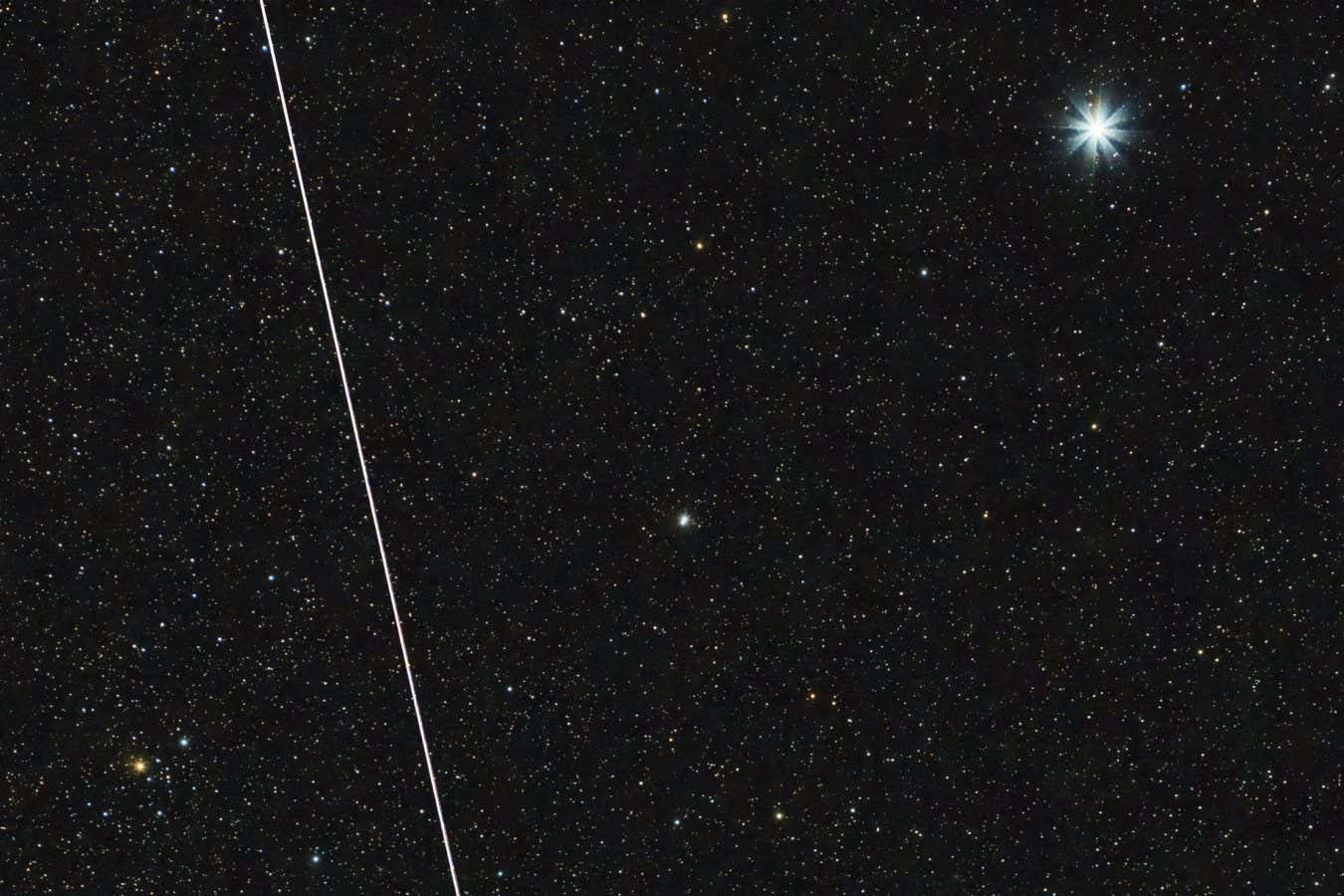Astronomers Alarmed by Satellite That Outshines All but Seven Stars
Observations from telescopes worldwide have confirmed that the communications satellite Blue Walker 3, a prototype for a space-based mobile phone network, is exceptionally bright, outshining all but seven stars in the night sky. This brightness presents significant challenges for astronomy, as ground-based telescopes may need to adapt by either tracking and avoiding satellite trails or extending their observation times to obtain clean, unobstructed data. The satellite, launched in 2022 by Texas-based company AST Space Mobile, serves as a testbed for the concept of a mobile phone network operating from space and features a 64-square-meter reflective antenna that contributes to its high visibility.

Figure 1. Astronomers alarmed by satellite that outshines all but seven stars
Figure 1 shows A year-long monitoring campaign involving telescopes in the United States, Chile, the Netherlands, and New Zealand has now definitively confirmed the exceptional brightness of Blue Walker 3.[1] Siegfried Eggl and a team from the International Astronomical Union in France have determined that the satellite is even brighter than previously estimated and is on par with the brightest stars in the Canis Minor and Eridanus constellations. This brightness poses a significant threat to ground-based astronomy, particularly for wide-angle sky surveys like the one planned at the Vera C. Rubin Observatory in Chile. The concern is that the presence of these intensely bright objects could lead to extensive data loss or even damage to detectors if not adequately addressed.
Addressing the challenges posed by bright satellites like Blue Walker 3 may involve implementing tracking and avoidance strategies by telescopes. However, these methods are not foolproof, as satellites can be difficult to track accurately. Consequently, telescopes might still face the need to periodically shut down their operations while a satellite passes over their line of sight, potentially causing delays in observations or impacting data quality.
Siegfried Eggl and his team also noted that Blue Walker 3's brightness varied over time, depending on its angle relative to the sun. Companies like AST Space Mobile have control over adjusting this angle, making it crucial for them to take measures to minimize the satellite's light reflection, according to Eggl.
AST Space Mobile, in response to concerns about the impact of its satellites on astronomy, has stated that it is actively collaborating with NASA and relevant astronomy working groups to develop advanced industry solutions, including potential operational interventions. The company is taking measures to avoid broadcasting in areas sensitive to radio astronomy and is also controlling its satellite's orientation to minimize brightness. Additionally, they are working on the development of anti-reflective coatings for their next generation of satellites, which are expected to total around 90.
While these efforts are being made, further observations are required to fully understand the extent of the impact on astronomy, particularly at longer wavelengths like those in the radio band. Satellites such as Blue Walker 3 are equipped with powerful radio transmitters, which could potentially have a more significant impact on radio-based astronomy. According to Siegfried Eggl, these satellites may be as bright as the sun in the context of radio astronomy, making their impact particularly concerning in that domain.
Aparna Venkatesan from the University of San Francisco, California, emphasizes the importance of comprehensive observation campaigns like the one conducted on Blue Walker 3.[2] She underscores that the brightness of an individual satellite is influenced by a complex interplay of factors, including its design, surface area, viewing angle, and altitude.
With an increasing number of satellite launches planned by both governmental and private space entities, there is a pressing need to address not only the potential light pollution and electromagnetic interference posed by individual satellites but also the cumulative impact of entire satellite constellations intended for low Earth orbit. This recognition highlights the growing significance of managing space activities in a manner that minimizes their collective impact on astronomical observations and other related aspects.
References:
- https://www.newscientist.com/article/2395238-astronomers-alarmed-by-satellite-that-outshines-all-but-seven-stars/
- https://en.news4social.com/space/astronomers-alarmed-by-satellite-that-outshines-all-but-7-stars/
Cite this article:
Janani R (2023),Astronomers Alarmed by Satellite That Outshines All but Seven Stars,Anatechmaz,pp.764

